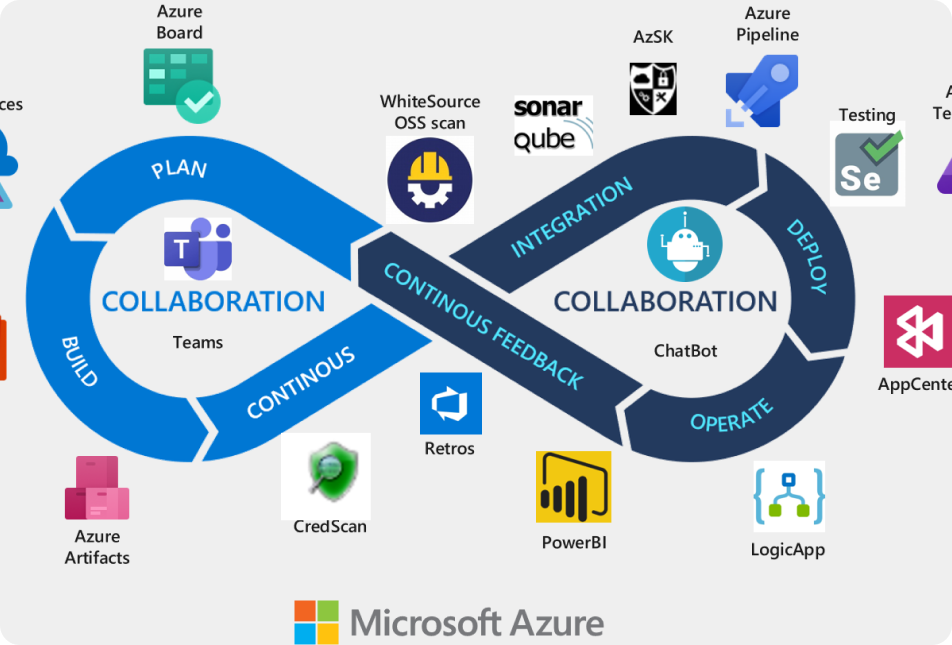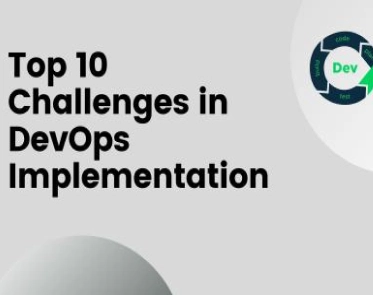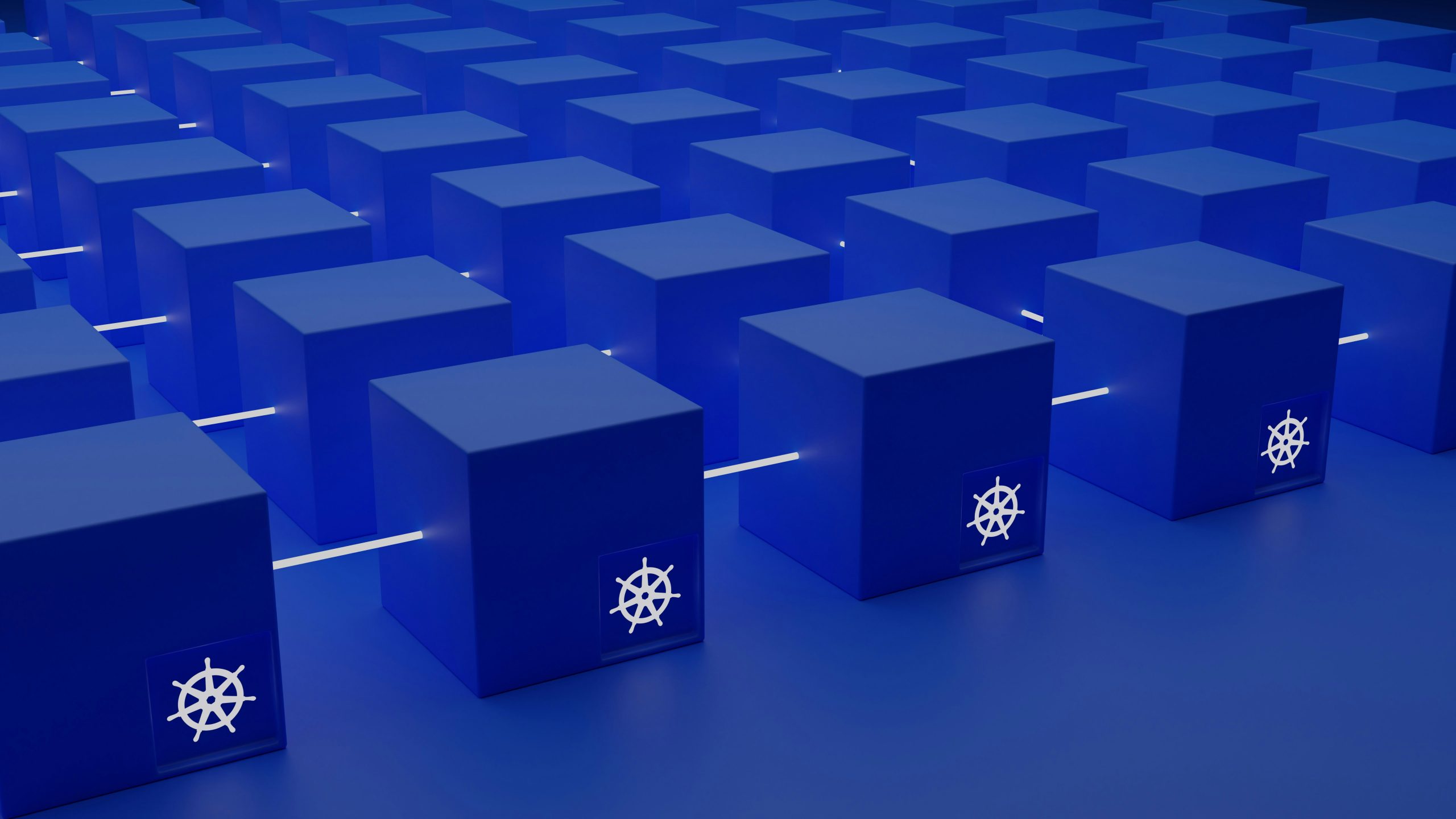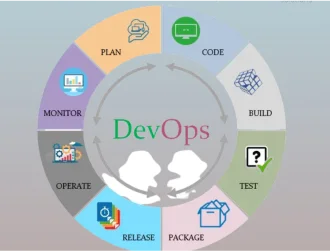
DevOps has seen unbelievable growth across organizations in an exceedingly short time. Nearly fifty percent of organizations have already enforced DevOps, and another 27% are planning to implement it within the next year. Like any major shift from traditional development workflows, DevOps brings significant advantages as well as challenges. To help your organization succeed, it’s important to understand the top 10 Challenges in DevOps Implementation, anticipate these potential issues, and prepare accordingly.
01Focus on Legacy Apps and Systems
The first challenge faced by DevOps groups involves facing legacy applications that were designed while not keeping DevOps in mind. This may appear harmless, however, it’s pretty difficult for the transition. you wish to take care of these legacy systems though you target new apps and systems with DevOps.
There are different reasons for transitioning with legacy applications. within the starting, you wish to figure on phasing them out altogether or bit by bit swiftness down the transitioning customers to a replacement version that’s maintained with a DevOps system. Otherwise, you’ll attempt to produce a replacement system for maintaining your legacy apps which is able to not interfere together with your DevOps system. you’ll conjointly use a Scala Performance activity tool like AppOptics which may facilitate to terminate non-DevOps systems within the forthcoming years.
02To much Tool-centric Transition
Many teams focus excessively on new tools and advanced systems without prioritizing the human aspect. Tool integration issues DevOps are pervasive tools must be properly evaluated for security, usability, and interoperability. Failure to do so leads to workflow friction and disrupted collaboration across traditional and modern infrastructure.
All of the above takes away from the human aspect of DevOps implementation, which means that teams are not as solidly integrated as technology.
03Resistance to change
DevOps often meets resistance—teams and stakeholders are hesitant to change established practices. This challenge makes it difficult to realize cultural transformation, which is at the core of the top 10 challenges in DevOps Implementation. The move toward DevOps can feel intimidating for many team members and key stakeholders, but adopting it as an evolution rather than a revolution helps ease the transition. Change should not be forced overnight; instead, it should be introduced gradually, allowing individuals to slowly adopt the DevOps culture and recognize how they can contribute to the process.
A practical way to redesign DevOps practices is to start small—by experimenting with a product, a single layer, or part of an existing application. Once teams experience the benefits firsthand, others naturally become more open to adopting new practices. This gradual, evolutionary approach reduces fear of the unfamiliar and helps everyone get on board with the cultural shift, making the journey into the DevOps world smoother and more sustainable.
04No Initial Focus on Analytics
Very rarely do we see that teams incorporate analytics into their decision-making process. This is also currently true for DevOps-oriented teams, who rely on their collaborative skills, automated systems, and algorithm-based deployments to deliver results. Quantitative insight is crucial, but many teams overlook analytics when starting with DevOps. Ignoring analytics can limit optimization of CI/CD pipeline challenges and decision-making, affecting product quality and process efficiency.
Lack of a solid, reliable analytics platform will cause enterprises to lose their hold on the market, along with their growth, which is competitive for DevOps adoption as the bottom line matters after everyone is told and done.
05Performance Testing
One thing that does not change is the need for extensive testing because user expectations are leveled. Thanks to DevOps, you can now create and publish products quickly, and don’t buy.
DevOps is great at many things, but it also has some limitations when it comes to bugs. Fortunately, there are many tools like Tridentis and Zephyr that can help you ensure the best performance of the products you release.
06Culture
As you know and “culture” plays a major role in any technical implementation. The traditional way of working makes people very comfortable. When the team is on-demand, there is resistance to move towards DevOps implementation.
07Select the Right Projects
For a new DevOps team, it may seem smart to choose DevOps for every new project, but not all the time. DevOps is not mandatory because sometimes it can slow down the entire production process if it is not implemented properly. So you must be diligent when choosing projects to use DevOps. When it comes to wondering whether DevOps is necessary or not, it is best to remember that DevOps is an operational strategy that will not be the right fit at all times.
If you are working to scale your software faster and get more speed from its agility, DevOps is a smart choice. Furthermore, DevOps does not work all the time and therefore it should not be considered as a solution that will solve all your problems. For example, if you are using an older system, it is better to stick to old methods and processes because it is not possible to find automated systems for these all the time.
In addition, planning and designing work is seen as a poor fit for DevOps as they go through designing and UX is a more successful way to adopt the process rather than continuous improvement.
08Facing the Cost of DevOps
Increasing revenue does not reduce DevOps costs. A faster release cycle means more value is added to your product, resulting in average revenue of 19%. Initial costs—including tool acquisition, cloud resources, and training—can be high, especially if the benefits are not immediately realized. Efficient budgeting and cost optimization in DevOps is crucial to ensure that long-term gains outweigh upfront investment.
09 Budget
A turnkey project for DevOps Implementation would be a very tough ask. Lets us agree on the fact that there will always be challenges. Unforeseen risk will be there to mitigate. This is not because of planning or understanding. But because of the fact, every implementation is unique in it is own way. A very small network or application component could make the DevOps Implementation tougher. Budgeting with better buffer could always help.
10Moving from legacy infrastructure to microservices
Outdated infrastructure and applications can be problematic, even if it has served the company for years. Staying on the legacy infrastructure can highlight the problem of stability, lack of support and the fact that you will be left behind in the race to move fast. The use of Infrastructure-A-Code together with microsystems is another step towards the future of continuous innovation. It modifies the life cycle of development to adapt to changing markets and customer needs. If a company does not remain innovative, it will be quickly replaced by something else it offers, no matter how popular that company is. Replacing or modifying old, monolithic applications with the new Microservices architecture allows FlugGates to be opened for faster development and faster innovation.








